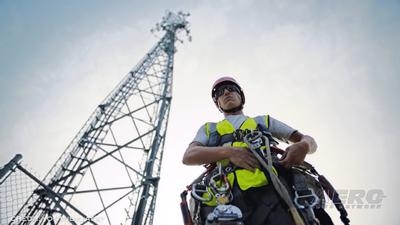Current 5G Procedures Create Substantial Workload for FAA, and GA is Still Being Left Out in The Cold
The bungled rollout of 5G networks across the US was the subject of an NBAA statement submitted in a February 3 hearing of the Aviation Subcommittee of the U.S. House Transportation and Infrastructure Committee.

There is a good deal to criticize with the rollout, from the late reaction of aviation regulators to begging network operators for repeated postponements in an effort to belatedly address issues warned of for years beforehand. In their statement, the NBAA applauded the efforts and wariness of the FAA and administrator Steve Dickson, but also reminded them that the problem is largely one of the government's own making, as well as the relative dearth of support for smaller aviation ecosystems. The rush to ensure wide scale passenger travel resumed with little interruption has left the less visible but no less vital general aviation sector. GA and 5G coexistence has gone relatively unaddressed, and represents a much harder problem to address throughout the fleet, with its endless variety of avionics and installations.
The statement illustrates the difficulty that radio altimeter replacement entails for the small but often vital sector. General aviation aircraft “deliver organs for transplant, perform air medical flights, assist in the aftermath of natural disasters and deliver critical supplies related to the COVID-19 pandemic. The United States general aviation industry, including business aviation, supports 1.2 million jobs and $247 billion in economic output," said the NBAA. An order to fix the issue is a tall one. "Potential radio altimeter replacement costs are of specific concern to general aviation aircraft operators since 85% are small and mid-sized businesses."

Looking forward, the association warns of significant administrative burden while approaching the problem piecemeal, as the FAA must reissue its Alternative Methods of Compliance to allow most commercial aircraft to operate in range of 5G interference. The FAA has granted limited AMOCs for business aircraft and helicopters, leaving them in the cold without support and barring them from conducting low-visibility approaches across the country.
"We respectfully request that the FAA dedicate the necessary resources to approve Letters of Acceptance for data 2 submittals by altimeter manufacturers and supporting AMOCs, where appropriate, for general aviation aircraft and helicopters. With the current AMOC process, the FAA must re-issue each approval every 30 days, which requires significant agency resources. As new 5G towers come online, the FAA must review the data to determine if existing AMOCs still maintain an adequate level of safety or if modifications are necessary. This process of reviewing data and analyzing AMOCs for the commercial air carrier fleet means that FAA resources are often not available for general aviation aircraft operators and manufacturers. If the telecom providers could share data on tower locations and deployment plans with the FAA as soon as it becomes available, the agency could manage the AMOC process more proactively and dedicate additional resources to general aviation operators," the statement reads.
The NBAA does say that 5G technology can co-exist safely alongside aviation, but the path to do so requires better "interagency collaboration between the FAA, FCC, and other government stakeholders," as well as enhanced data sharing between those bodies and telecom providers. "For example, data sharing between the FAA and telecom providers in as close to real-time as possible would allow the FAA to perform a more forward-looking analysis and could mitigate the need to re-issue AMOC every 30 days." At the very least, the problem is somewhat addressed now, and the industry may just have the breathing room it needs to implement lasting, effective solutions.
 ANN's Daily Aero-Linx (06.29.25)
ANN's Daily Aero-Linx (06.29.25) ANN's Daily Aero-Term (06.29.25): Gross Navigation Error (GNE)
ANN's Daily Aero-Term (06.29.25): Gross Navigation Error (GNE) Classic Aero-TV: Anticipating Futurespace - Blue Origin Visits Airventure 2017
Classic Aero-TV: Anticipating Futurespace - Blue Origin Visits Airventure 2017 NTSB Final Report: Cirrus SR22
NTSB Final Report: Cirrus SR22 Airborne Affordable Flyers 06.26.25: PA18 Upgrades, Delta Force, Rhinebeck
Airborne Affordable Flyers 06.26.25: PA18 Upgrades, Delta Force, Rhinebeck




